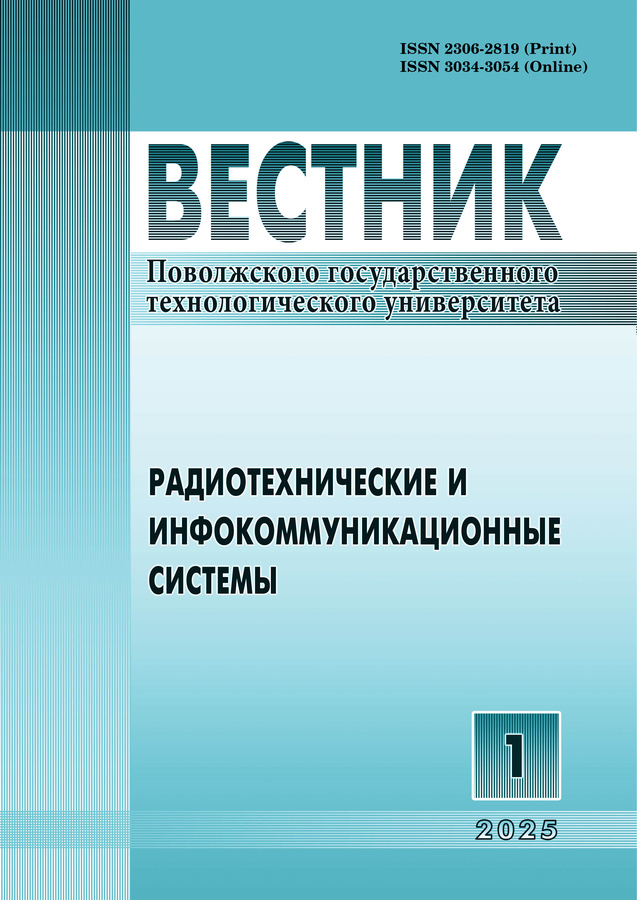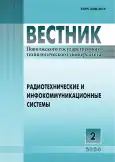Оптимизация расположения приёмных пунктов радиотелеметрической системы контроля воздушных объектов
- Авторы: Бугров В.Н.1, Васильев В.С.2, Ивлев Д.Н.1
-
Учреждения:
- Национальный исследовательский Нижегородский государственный университет им. Н.И. Лобачевского
- Российский федеральный ядерный центр - Всероссийский научно-исследовательский институт экспериментальной физики
- Выпуск: № 2 (2024)
- Страницы: 32-43
- Раздел: ТЕЛЕКОММУНИКАЦИИ И РАДИОТЕХНИКА
- URL: https://journals.rcsi.science/2306-2819/article/view/270496
- DOI: https://doi.org/10.25686/2306-2819.2024.2.32
- EDN: https://elibrary.ru/VMBENM
- ID: 270496
Цитировать
Полный текст
Аннотация
Для непрерывного приёма телеметрической информации с борта летательных аппаратов, движущихся по сложным траекториям с высокой скоростью, применяется пространственное разнесение приёмных пунктов. Расположение приёмных пунктов в пространстве, обеспечивающее непрерывный приём, сильно зависит от траектории и характера движения объекта контроля, параметров антенных систем, что приводит к сложности прогнозирования их оптимальных координат. В силу этого актуальной является задача автоматизированного алгоритмического поиска оптимального расположения приёмных пунктов, решаемая в данной работе. Результаты оптимизации расположения приёмных пунктов радиотелеметрической системы, полученные с помощью специально разработанного программного обеспечения, показали возможность непрерывного качественного приёма телеметрической информации с помощью четырёх приёмных пунктов со скоростью около 8 Мбит/с с борта летательного аппарата, движущегося с высокой скоростью по нисходящей траектории с постоянным изменением пространственного положения двух передающих направленных антенн.
Ключевые слова
Полный текст
Об авторах
Владимир Николаевич Бугров
Национальный исследовательский Нижегородский государственный университет им. Н.И. Лобачевского
Email: ivlev@rf.unn.ru
ORCID iD: 0000-0003-3220-9354
кандидат технических наук, доцент кафедры радиотехники
Россия, 603022, Нижний Новгород, пр. Гагарина, 23Валерий Серафимович Васильев
Российский федеральный ядерный центр - Всероссийский научно-исследовательский институт экспериментальной физики
Email: ivlev@rf.unn.ru
SPIN-код: 4639-4633
кандидат технических наук, первый заместитель директора, директор филиала
Россия, 607188, Саров, пр. Мира, 37Дмитрий Николаевич Ивлев
Национальный исследовательский Нижегородский государственный университет им. Н.И. Лобачевского
Автор, ответственный за переписку.
Email: ivlev@rf.unn.ru
ORCID iD: 0009-0001-7939-4385
SPIN-код: 5853-3158
кандидат физико-математических наук, доцент кафедры радиотехники
Россия, 603022, Нижний Новгород, пр. Гагарина, 23Список литературы
- Kirillov S. N., Pisaka P. S. Algorithm of Telemetry Information Weighting Signal Processing from Territorially-Distributed Receiving Stations // XIV International Scientific-Technical Conference on Actual Problems of Electronics Instrument Engineering (APEIE), Novosibirsk, Russia. 2018. Pp. 197-201. doi: 10.1109/APEIE.2018.8545572
- Design of Reconfigurable Real-Time Telemetry Monitoring and Quantitative Management System for Remote Sensing Satellite in Orbit / W. Wang, Y. Zhang, X. Wang et al. // 2018 IEEE 3rd Advanced Information Technology, Electronic and Automation Control Conference (IAEAC), Chongqing, China. 2018. Pp. 1293-1297. doi: 10.1109/IAEAC.2018.8577765
- Design and Implementation of Telemetry Simulation Equipment for Target Missile / S. Chen, Y. Meng, J. Tu et al. // 2023 IEEE 16th International Conference on Electronic Measurement & Instruments (ICEMI), Harbin, China. 2023. Pp. 476-479. doi: 10.1088/1742-6596/1507/10/102039
- Yang S., Zhenhua W., Zhe Y. Trends and Countermeasures of Next Generation Telemetry Technology Innovation // 2020 IEEE 3rd International Conference of Safe Production and Informatization (IICSPI), Chongqing City, China. 2020. Pp. 7-12.
- Мороз А. П. Ракетная телеметрия: монография. М.: Научный консультант, 2021. 478 с.
- Финк Л. М. Теория передачи дискретных сообщений. М.: «Советское радио», 1970. 728 с.
- Волков Л. Н., Немировский М. С., Шинаков Ю. С. Системы цифровой радиосвязи: базовые методы и характеристики. М.: Эко-Трендз, 2005. 392 с.
- Малышев И. И., Шестопалов В. И., Мордовин А. И. Разнесенный прием в каналах связи с райсовскими замираниями сигналов // Теория и техника радиосвязи. 2021. № 1. С. 19-23.
- Моделирование телеметрической системы передачи информации с учётом сложного характера движения объекта контроля / В. С. Васильев, Д. Н. Ивлев, И. Я. Орлов и др. // Вестник Поволжского государственного технологического университета. Сер.: Радиотехнические и инфокоммуникационные системы. 2024. № 1 (61). С. 6-22. DOI: https://doi.org/10.25686/2306-2819.2024.1.6; EDN: AGURNF
- Мину М. Математическое программирование. Теория и алгоритмы. М.: Статистика, 1990. 488 c.
- Воинов Б. С., Бугров В. Н., Воинов Б. Б. Информационные технологии и системы: поиск оптимальных, оригинальных и рациональных решений. М.: Наука, 2007. 730 c.
- Батищев Д. И. Методы оптимального проектирования. М.: Радио и связь, 1984. 248 c.
- Кляус К. М. Численные методы нелинейной оптимизации в задачах математического моделирования. Общая характеристика. СПб.: Изд-во СПбГЭУ, 2021. 112 с.
Дополнительные файлы





















